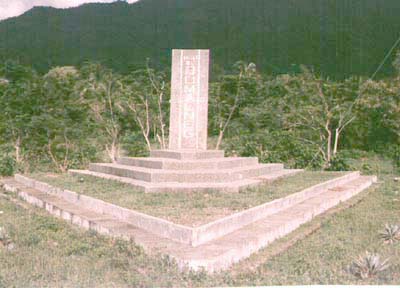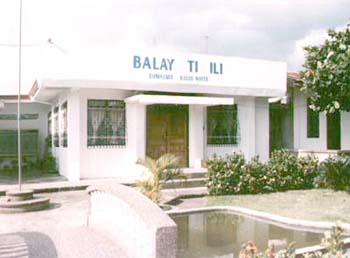

| Municipality of DUMALNEG |

The municipality of Dumalneg originated from the northeastern portion of Bangui which was inhabited by Itnegs or "yapayaos" who came from Apayao, Mountain Province. Later on, the place was converted into a district and by virtue of a Sangunian Panlalawaigan Resolution, the place was converted to a regular municipality. The municipality derived its name from the only leader name Dumalneg. This leader also derived also derived his name from the famous river called "Dumalneg". It was customary among the early inhabitants to adopt, the name of the popular place where the child was born. Thus, the child was named and Dumalneg was destined to become the dynamic leader of the early inhabitants. Dumalneg is 73 kilometers northeast of Laoag City and 562 kilometers away from Manila. It lies on the northeastern part of Ilocos Norte, bounded on the north by the municipality of Pagudpud, on the east by Adams, on the south by Vintar, and on the west by the municipality of Bangui.
Dumalneg has wide of virgin forest and considerable areas of valleys and plains, criss-crossed by rivers and brooks. Dumalneg is a good ground for wildlife, fishing and hunting. The place is no longer isolated from modern ways of life because of recently constructed concrete bridges and well maintained municipal and barangay roads. The climate is similar to that of other towns of Ilocos Norte. Majority of the inhabitants belong to the cultural minority group but originally it was composed of purely mountain tribesman. Intermarriage and migration had caused the mixture of lowlanders in the municipality. The prevalent dialect is called Apayao or "Apayao" but they could also speak the Ilocano dialect. The inhabitants are relatively law abiding and peace-loving people. Some of the Tinguians were already converted and adopted the Christian faith, most of them belonging to the Independent Church, although others still adhere to their paganistic belief. Agricultural is the primary source of livelihood. Few educated people are employed while some derive their income from planting "maliket", an upland rice variety and root crops like gabi, camote, tugue. The municipality is a rich source for forest products like lumber, rattan and firewood. Some people also engage in fishing and hunting. The municipality has a complete elementary school, a community health center, a basketball court and a playground. Gatherings and school programs are never complete without showing the native dance "tadek." |






